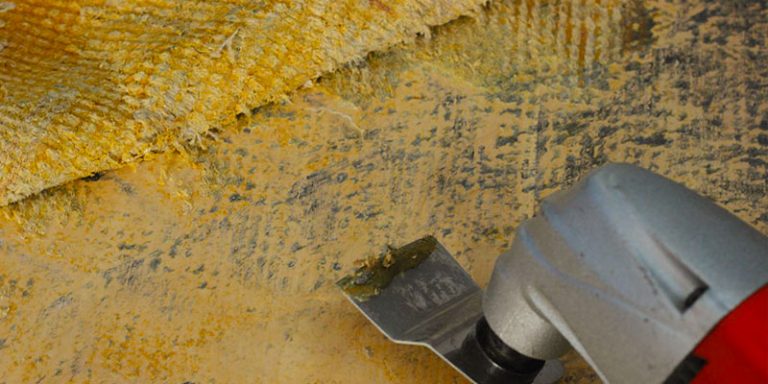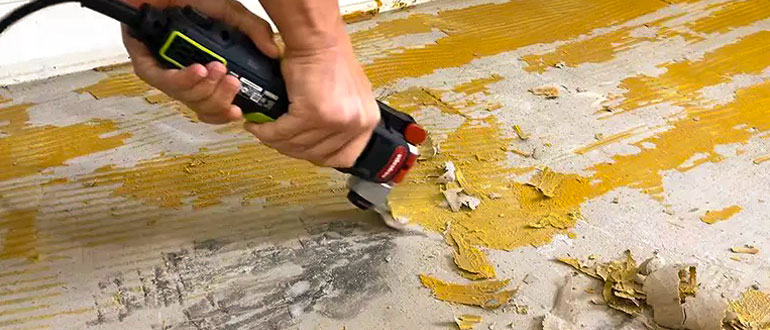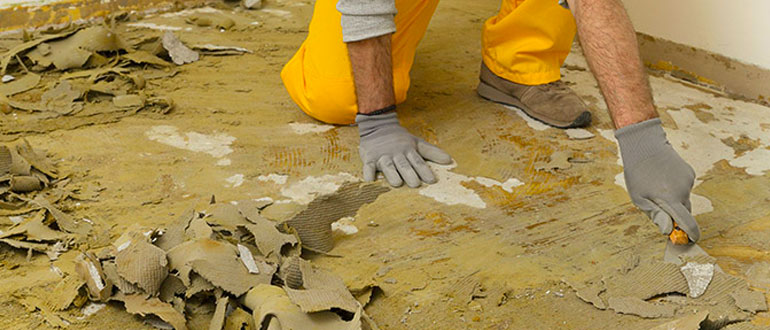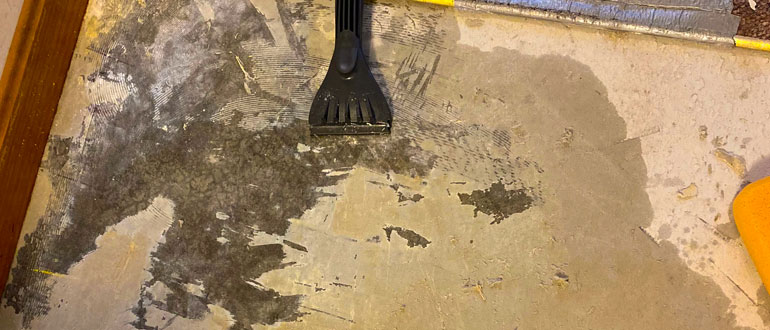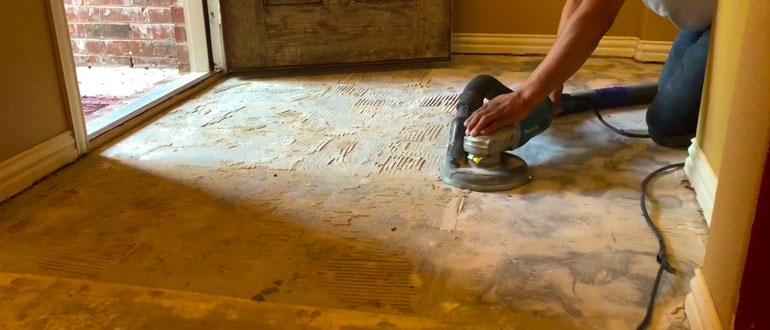If you plan on installing new flooring or want to restore the original look of your existing flooring, removing mortar from the floor is an essential step. However, the process can be challenging and time-consuming if you’re unfamiliar with the proper techniques and tools. Don’t worry; let’s explore how to remove mortar from the floor with our practical DIY guide.
In this guide, we’ll provide some tips and tricks on removing mortar from the floor effectively without causing damage to your flooring. Whether dealing with a small DIY project or a large-scale renovation, these methods will help you achieve a clean and smooth surface ready for your next flooring installation.
Prepare The Area to Remove Mortar From The Floor
Before removing mortar from your floor, it’s essential to prepare the area to ensure a safe and efficient work environment. Here are some steps you should follow:
- Clear the area: Remove all furniture, rugs, and other items from the room. This will give you more space to work and prevent damage to your belongings.
- Wear protective gear: Wear protective equipment such as safety goggles, gloves, and a dust mask. This will protect you from any debris or dust generated during the process.
- Cover adjacent surfaces: Cover any adjacent surfaces you want to protect from debris or dust with plastic sheets or drop cloths. This includes walls, baseboards, and other surfaces close to the work area.
- Turn off the HVAC system: Turn off your heating, ventilation, and air conditioning (HVAC) system to prevent the spread of dust throughout your home.
- Ventilate the area: Open windows and doors and use fans to create adequate ventilation. This will help to disperse the dust and keep the air fresh.
By following these steps, you can create a safe and clean work environment that will make removing mortar from your floor much easier and more efficient.
Gather The Proper Tools And Supplies to Remove Mortar From The Floor
You’ll need the right tools and supplies to remove mortar from your floor. Here are some essential items you should gather before you start:
- Hammer and chisel: A hammer and chisel are essential for breaking up and removing the mortar from your floor. Look for a chisel with a wide, flat blade for the best results.
- Angle grinder: An angle grinder with a diamond blade can also remove mortar quickly and efficiently. This is especially useful for larger areas.
- Safety gear: As mentioned earlier, you should wear safety gear such as goggles, gloves, and a dust mask to protect yourself from debris and dust.
- Vacuum cleaner: A vacuum cleaner with a HEPA filter is essential for cleaning up the dust generated during the process.
- Cleaning supplies: After removing the mortar, you must clean the floor thoroughly. Gather cleaning supplies such as a bucket, mop, and cleaning solution.
- Knee pads: Removing mortar from a floor can be hard on your knees, so consider wearing knee pads to protect yourself from discomfort.
By having these tools and supplies ready before you start, you’ll be able to work more efficiently and get the job done faster.
The Proper Techniques And Methods to Remove Mortar From The Floor
Now that you have prepared the area and gathered the necessary tools and supplies, it’s time to start removing mortar from your floor. Here are some proper techniques and methods to follow:
- Start with the chisel and hammer: Use the chisel and hammer to break up the mortar into smaller pieces. Work in small sections, starting at the edge of the floor and moving inward. Use the chisel to remove any stubborn bits of mortar.
- Use an angle grinder: If the mortar is challenging or if you have a large area to cover, an angle grinder can be a helpful tool. Use it to grind away at the mortar, wearing safety goggles and a dust mask.
- Clean up debris: Once you’ve removed the mortar, use a vacuum cleaner with a HEPA filter to clean up the debris and dust. Be sure to vacuum the entire area thoroughly to remove any remaining particles.
- Clean the floor: After removing the mortar and debris, clean the floor thoroughly with a cleaning solution and mop. Follow the manufacturer’s instructions for any cleaning products you use.
By following these techniques and methods, you’ll be able to remove the mortar from your floor effectively and efficiently without causing damage to your flooring.
DIY Guide to Removing Mortar from The Floor Without Professional Help
If you’re a DIY enthusiast, you may be interested in removing the mortar from your floor without professional help. Here’s a step-by-step guide to help you:
- Prepare the area: Follow the earlier steps to prepare the area by clearing the space, wearing protective gear, covering adjacent surfaces, turning off the HVAC system, and ventilating the area.
- Gather the necessary tools and supplies: As mentioned earlier, you’ll need a hammer and chisel, angle grinder, safety gear, vacuum cleaner, cleaning supplies, and knee pads.
- Start removing the mortar: Use the hammer and chisel to break the mortar into smaller pieces. Work in small sections and remove any stubborn bits of mortar. Use the angle grinder to grind away at the mortar if necessary.
- Clean up debris: Use the vacuum cleaner with the HEPA filter to clean up the debris and dust.
- Clean the floor: Use a cleaning solution and mop to clean the floor thoroughly.
- Repeat the process: If there are any remaining areas of mortar, repeat the process until the floor is entirely free of mortar.
- Inspect the floor: Once you’ve removed all the mortar, inspect the floor for any damage. If you notice any cracks or damage, repair it before installing new flooring.
Following these steps, you can remove the mortar from your floor without professional help. However, if you’re unsure about any part of the process, it’s always best to consult a professional to avoid causing any damage to your flooring or injuring yourself.
Common Issues to Removing Mortar From Floor
Removing mortar from a floor can be challenging, and you may encounter some common issues along the way. Here are some of the most common problems you may face while removing mortar from a floor:
- Stubborn or hard-to-remove mortar: Some types may be particularly stubborn and hard to remove, even with a chisel or angle grinder. You may need a more robust chemical solution to soften the mortar in such cases.
- Damaged or scratched flooring: If you’re not careful, you may accidentally scratch or damage the flooring while removing the mortar. This can be especially problematic if you have delicate or expensive flooring materials like tiles, hardwood, or marble.
- Dust and debris: Removing mortar can generate a lot of dust and debris, harming your health if inhaled. It’s essential to wear protective gear and use a vacuum cleaner with a HEPA filter to minimize the amount of dust and debris in the air.
- Time-consuming process: Removing mortar from a floor can be time-consuming, especially if you have a large area to cover or if the mortar is particularly stubborn.
- Incomplete removal: Removing all the mortar can be difficult, especially if you’re working in hard-to-reach areas like corners or edges. It’s essential to be thorough and repeat the process to remove all the mortar.
By being aware of these common issues and taking the necessary precautions, you can avoid causing damage to your flooring or your health while removing mortar from a floor.
The Most CommonFAQs
Here are some frequently asked questions (FAQs) related to removing mortar from a floor:
Q: Can I remove mortar from a floor without professional help?
Yes, you can remove mortar from a floor yourself without professional help. Still, it’s essential to be careful and follow the proper techniques and methods to avoid damaging your flooring or injuring yourself.
Q: What tools do I need to remove mortar from a floor?
A: To remove mortar from a floor, you’ll need a hammer and chisel, an angle grinder, safety gear, a vacuum cleaner, cleaning supplies, and knee pads.
Q: How do I know if the mortar can be removed?
A: The mortar is ready to be removed when it is no longer soft or pliable and has hardened. You can test the hardness of the mortar by pressing your fingernail into it. If your nail doesn’t make an impression, it’s ready to be removed.
Q: Can I use a chemical solution to remove mortar from a floor?
A: Yes, you can use a chemical solution to remove mortar from a floor, but follow the manufacturer’s instructions and use caution, as some chemicals can be harsh and dangerous.
Q: How do I protect my flooring while removing mortar?
A: To protect your flooring while removing mortar, use a drop cloth or plastic sheeting to cover the floor and adjacent surfaces. Use knee pads to protect your knees, and avoid using excessive force with your tools.
Q: Can I remove mortar damage from my flooring?
A: Yes, removing mortar can potentially damage your flooring, especially if you’re not careful or using the wrong tools or techniques. It’s important to be gentle and follow the proper techniques to avoid damaging your flooring.
Conclusion
In conclusion, Removing mortar from a floor is a challenging task. But with the right tools, techniques, and precautions, you can do it safely and effectively. Preparing the area, gathering the necessary tools and supplies, and following the proper methods to avoid damaging your flooring or injuring yourself is essential.
Furthermore, Common issues such as stubborn mortar, dust and debris, and time-consuming process may arise. Still, by being aware of these issues and taking the necessary precautions, you can avoid causing damage to your flooring or your health.
You May Also Like To Read:
